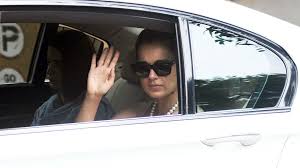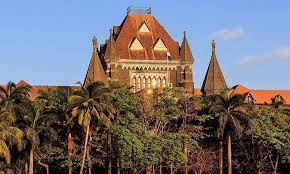Feature
Demolish Adarsh Society building,orders Bombay High Court
 Mumbai:Sending a strong signal against corruption, the Bombay High Court here on Friday upheld a 2011 order of the Ministry of Environment, and asked the Centre to demolish the controversial 31-storey Adarsh Society Building.
Mumbai:Sending a strong signal against corruption, the Bombay High Court here on Friday upheld a 2011 order of the Ministry of Environment, and asked the Centre to demolish the controversial 31-storey Adarsh Society Building.
It also ordered the government to take criminal action against politicians and bureaucrats for “misuse and abuse” of power.
On a plea by the Society’s lawyer, a division bench of Justice R.V. More and Justice R.G. Ketkar put on hold its own orders for 12 weeks (about three months) to allow the Society and the state government to file an appeal with the Supreme Court.
However, Acting Advocate-General Rohit Dev representing the state, opposed the stay on the order sought by the Society.
“The high court has upheld the order of the ministry on January 16, 2011, to demolish the building within three months but it was challenged by the Adarsh Society,” said Y.P. Singh, one of the lawyers involved in the case.
The judges, who conducted the final hearing in the case between September-December 2015, also ordered the state government to probe the involvement of politiciains, ministers and officials in the scam, initiate criminal or civil proceedings against them for “misuse and abuse” of their powers and restore the plot.
The demolition would be carried out at the expense of Adarsh Cooperative Housing Society, the court ruled.
The judges also directed the defence ministry to conduct a departmental inquiry against its officers for not initiating action early enough when the scam pertaining to the building was exposed.
The court verdict came in the open court on a bunch of petitions filed by the Society challenging the environment ministry’s 2011 order and the title suit filed by the defence ministry claiming ownerhship of the land where the building was constructed.
The court also appreciated the efforts by complainant Simpreet Singh, a member of National Alliance of Peoples’ Movement (NAPM) without whose intervention, it said, the gross violations by the Society would have gone undetected.
The high court verdict came on the then union minister for environment Jairam Ramesh’s order dated January 16, 2011, for demolition of the building within three months as it was unauthorised and violated coastal regulation zone norms, among other things.
Later, the defence ministry also moved the court seeking implementation of the environment ministry’s orders to raze the 31-storey tower in Colaba, adjacent to the defence establishments in south Mumbai.
After the scam erupted in November 2010, with allegations that it had violated various environmental norms and regulations, lacked certain permissions and other issues, it claimed the job of then chief minister Ashok Chavan and several other officials.
The building, originally intended to be a six-storey structure to house Kargil War heroes and widows, was later transformed into a 100-metre tall tower in which several politicians, bureaucrats and army officers allegedly conspired to corner flats at cheap rates.
The CBI investigations finally resulted in 13 people being charge-sheeted. Among them was Ashok Chavan, whose three relatives figured in the list of the tainted Society’s members. The building remains unoccupied, without water and electricity since November 2010.
In January 2011, a two-member commission of inquiry consisting retired high court judge, Justice J.A. Patil, and retired chief secretary P. Subrahmanyam, was also constituted but the then Congress-Nationalist Congress Party only partly accepted its recommendations.
Entertainment
Meghalaya Reserves Legalized Gambling and Sports Betting for Tourists

The State Scores Extra High on Gaming-Friendly Industry Index
Meghalaya scored 92.85 out of 100 possible points in a Gaming Industry Index and proved to be India’s most gaming-friendly state following its recent profound legislation changes over the field allowing land-based and online gaming, including games of chance, under a licensing regime.
The index by the UK India Business Council (UKIBC) uses a scale of 0 to 100 to measure the level of legalisation on gambling and betting achieved by a state based on the scores over a set of seven different games – lottery, horse racing, betting on sports, poker, rummy, casino and fantasy sports
Starting from February last year, Meghalaya became the third state in India’s northeast to legalise gambling and betting after Sikkim and Nagaland. After consultations with the UKIBC, the state proceeded with the adoption of the Meghalaya Regulation of Gaming Act, 2021 and the nullification of the Meghalaya Prevention of Gambling Act, 1970. Subsequently in December, the Meghalaya Regulation of Gaming Rules, 2021 were notified and came into force.
All for the Tourists
The move to legalise and license various forms of offline and online betting and gambling in Meghalaya is aimed at boosting tourism and creating jobs, and altogether raising taxation revenues for the northeastern state. At the same time, the opportunities to bet and gamble legally will be reserved only for tourists and visitors.
“We came out with a Gaming Act and subsequently framed the Regulation of Gaming Rules, 2021. The government will accordingly issue licenses to operate games of skill and chance, both online and offline,” said James P. K. Sangma, Meghalaya State Law and Taxation Minister speaking in the capital city of Shillong. “But the legalized gambling and gaming will only be for tourists and not residents of Meghalaya,” he continued.
To be allowed to play, tourists and people visiting the state for work or business purposes will have to prove their non-resident status by presenting appropriate documents, in a process similar to a bank KYC (Know Your Customer) procedure.
Meghalaya Reaches Out to a Vast Market
With 140 millions of people in India estimated to bet regularly on sports, and a total of 370 million desi bettors around prominent sporting events, as per data from one of the latest reports by Esse N Videri, Meghalaya is set to reach out and take a piece of a vast market.
Estimates on the financial value of India’s sports betting market, combined across all types of offline channels and online sports and cricket predictions and betting platforms, speak about amounts between $130 and $150 billion (roughly between ₹9.7 and ₹11.5 lakh crore).
Andhra Pradesh, Telangana and Delhi are shown to deliver the highest number of bettors and Meghalaya can count on substantial tourists flow from their betting circles. The sports betting communities of Karnataka, Maharashtra, Uttar Pradesh and Haryana are also not to be underestimated.
Among the sports, cricket is most popular, registering 68 percent of the total bet count analyzed by Esse N Videri. Football takes second position with 11 percent of the bets, followed by betting on FIFA at 7 percent and on eCricket at 5 percent. The last position in the Top 5 of popular sports for betting in India is taken by tennis with 3 percent of the bet count.
Local Citizens will Still have Their Teer Betting
Meghalaya residents will still be permitted to participate in teer betting over arrow-shooting results. Teer is a traditional method of gambling, somewhat similar to a lottery draw, and held under the rules of the Meghalaya Regulation of the Game of Arrow Shooting and the Sale of Teer Tickets Act, 2018.
Teer includes bettors wagering on the number of arrows that reach the target which is placed about 50 meters away from a team of 20 archers positioned in a semicircle.
The archers shoot volleys of arrows at the target for ten minutes, and players place their bets choosing a number between 0 and 99 trying to guess the last two digits of the number of arrows that successfully pierce the target.
If, for example, the number of hits is 256, anyone who has bet on 56 wins an amount eight times bigger than their wager.























